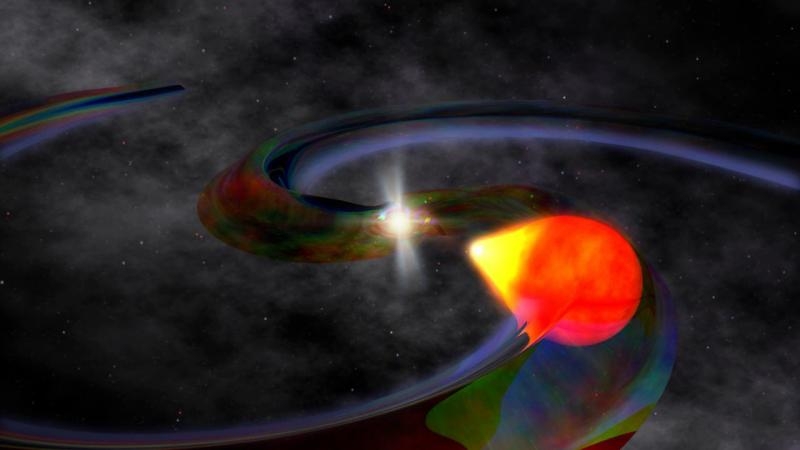Astronomers find six new millisecond pulsars

Artist's concept of a millisecond pulsar. Credit: NASA
January 26, 2016 by Tomasz Nowakowski
(Phys.org)—NASA's Fermi Gamma-ray Space Telescope has once again proven that it is an excellent tool to search for rotating neutron stars emitting beams of electromagnetic radiation, known as pulsars. A team of astronomers, led by H. Thankful Cromartie of the University of Virginia, has recently used the 305-meter Arecibo radio telescope in Puerto Rico to observe unidentified sources of gamma rays detected by the Large Area Telescope (LAT) onboard the Fermi spacecraft. As it turns out, six of these objects indicated by LAT are rapidly rotating neutron stars, with periods of a few thousandths of a second, called millisecond pulsars (MSPs). The scientists published their results online on Jan. 20 on the arXiv pre-print server.
The objects of the study were chosen from the LAT's 4-year point source catalog. The astronomers chose 34 from over 1,000 unidentified sources of gamma rays to observe them in detail with the Arecibo telescope. The catalog provided crucial spectral data that helped distinguish possible MSPs from other gamma-ray-emitting objects, like active galactic nuclei (AGNs).
"Overall, the search for MSPs in the galactic disk has been made extremely efficient by employing Fermi-LAT data in selecting radio search targets," the researchers noted in their paper posted on arXiv.
Arecibo observations were conducted from June to September 2013. The telescope's raw sensitivity and its large gain makes it a very efficient tool for finding millisecond pulsars. Thanks to Arecibo, the researchers were able to detect six MSPs with rotation periods ranging between 1.99 and 4.66 ms. One of the newly detected pulsars is a typical neutron star, a white dwarf binary with an 83-day orbital period. According to the research, the other MSPs are in interacting compact binaries wit orbital period less than eight hours.
See full text